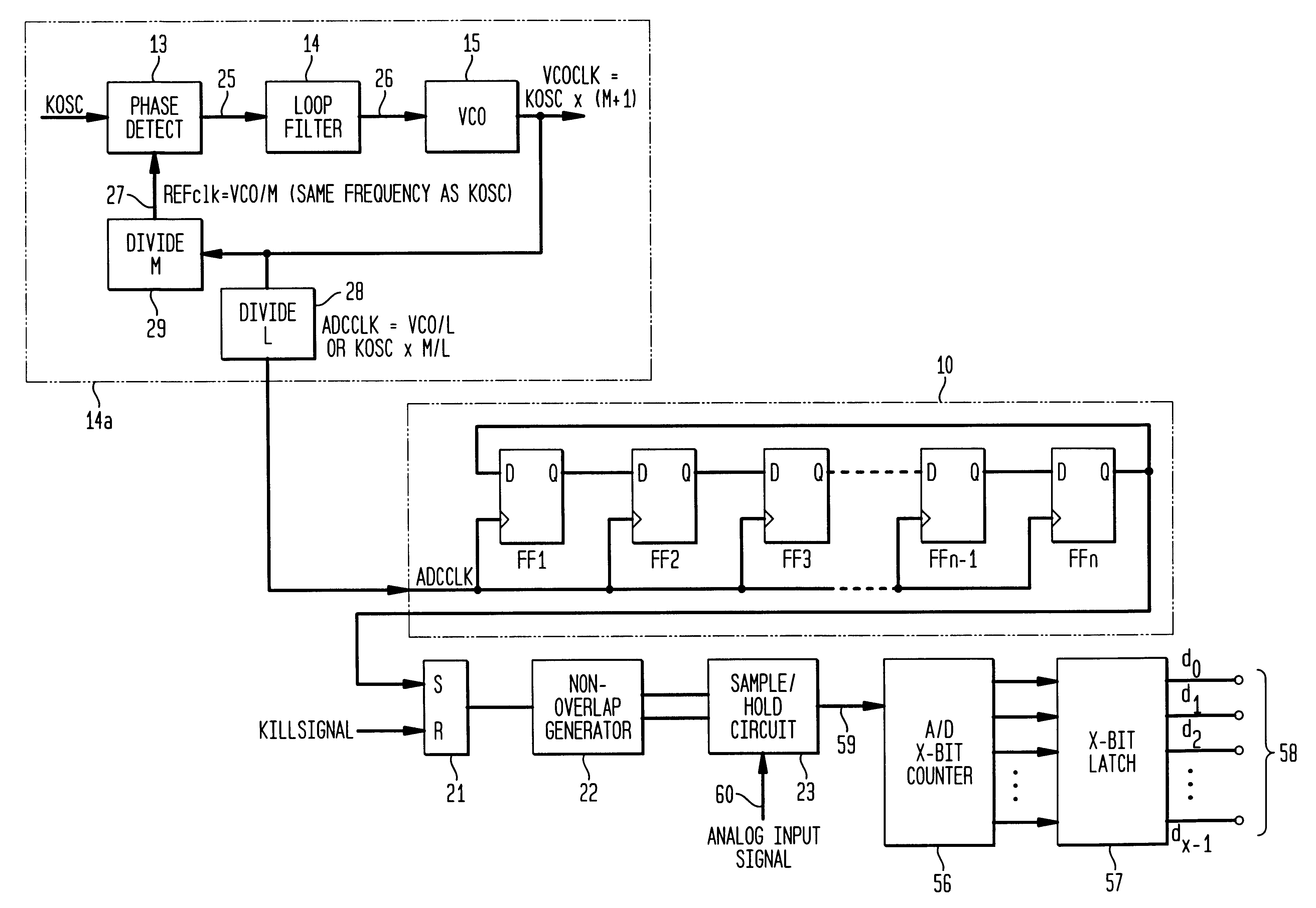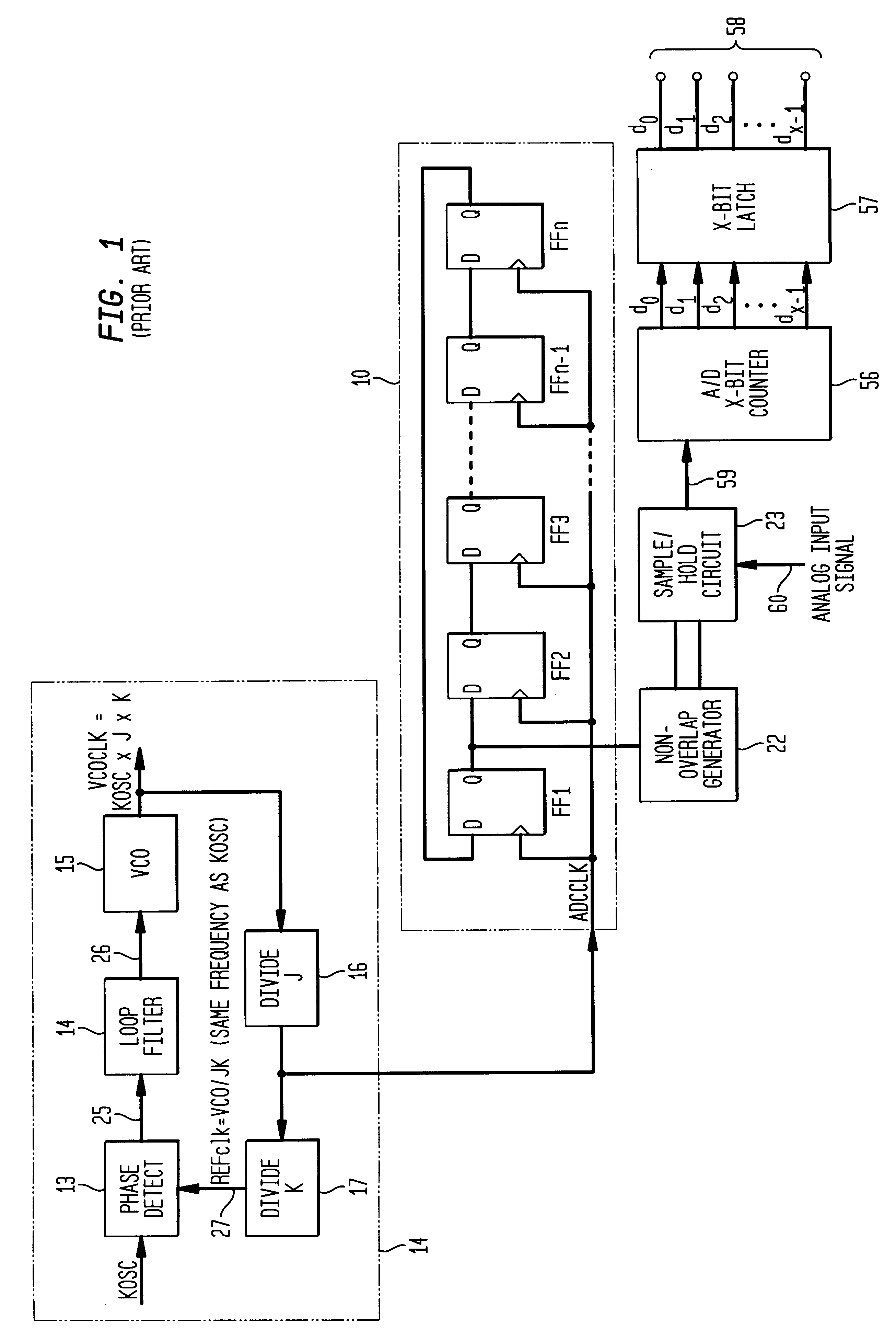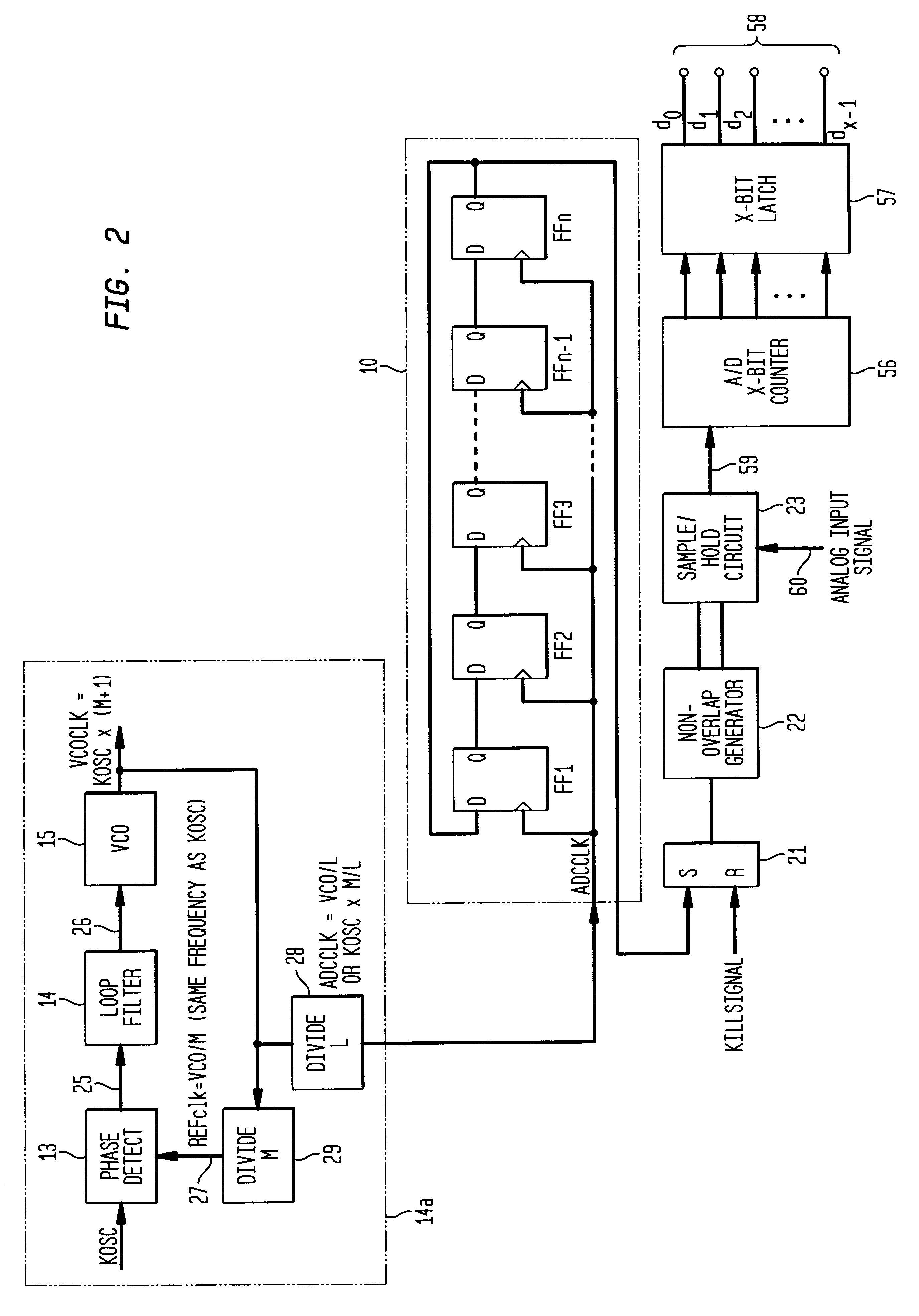Clocking technique for reducing sampling noise in an analog-to-digital converter
a clocking technique and digital converter technology, applied in the field of improving the operation of analogtodigital converters, can solve the problems of serious operational problems adversely affecting the regularity of the adc clock's clock frequency adcclk, and invariably entering the system, so as to improve the resolution, reduce the cost, and improve the effect of noise reduction
- Summary
- Abstract
- Description
- Claims
- Application Information
AI Technical Summary
Benefits of technology
Problems solved by technology
Method used
Image
Examples
Embodiment Construction
A preferred embodiment of the present invention will now be described with reference to FIGS. 2-4. Other embodiments may be realized and structural, or logical changes may be made to the disclosed embodiment without departing from the spirit or scope of the present invention.
FIG. 2 depicts a conventional rotating ones counter 10, of n stages, consisting of n successive D flip-flops FF1, FF2, . . . FFn, where n may be any number that allows the ADC to satisfactorily perform the particular conversion process being employed. The output of each D flip-flop Q is coupled to the input of the D flip-flop immediately following. The output of the n.sup.th D flip-flop Q is coupled to the input of the first D flip-flop D. The clock input of each D flip-flop FF1, FF2, . . . FFn is coupled to the noisy ADC clock ADCCLK Therefore each of the n D flip-flops receives the same common clock pulse ADCCLK.
The ADC clock ADCCLK is generated by the PLL circuit 14a, wherein the ADC clock is maintained at a ...
PUM
 Login to View More
Login to View More Abstract
Description
Claims
Application Information
 Login to View More
Login to View More - R&D
- Intellectual Property
- Life Sciences
- Materials
- Tech Scout
- Unparalleled Data Quality
- Higher Quality Content
- 60% Fewer Hallucinations
Browse by: Latest US Patents, China's latest patents, Technical Efficacy Thesaurus, Application Domain, Technology Topic, Popular Technical Reports.
© 2025 PatSnap. All rights reserved.Legal|Privacy policy|Modern Slavery Act Transparency Statement|Sitemap|About US| Contact US: help@patsnap.com



